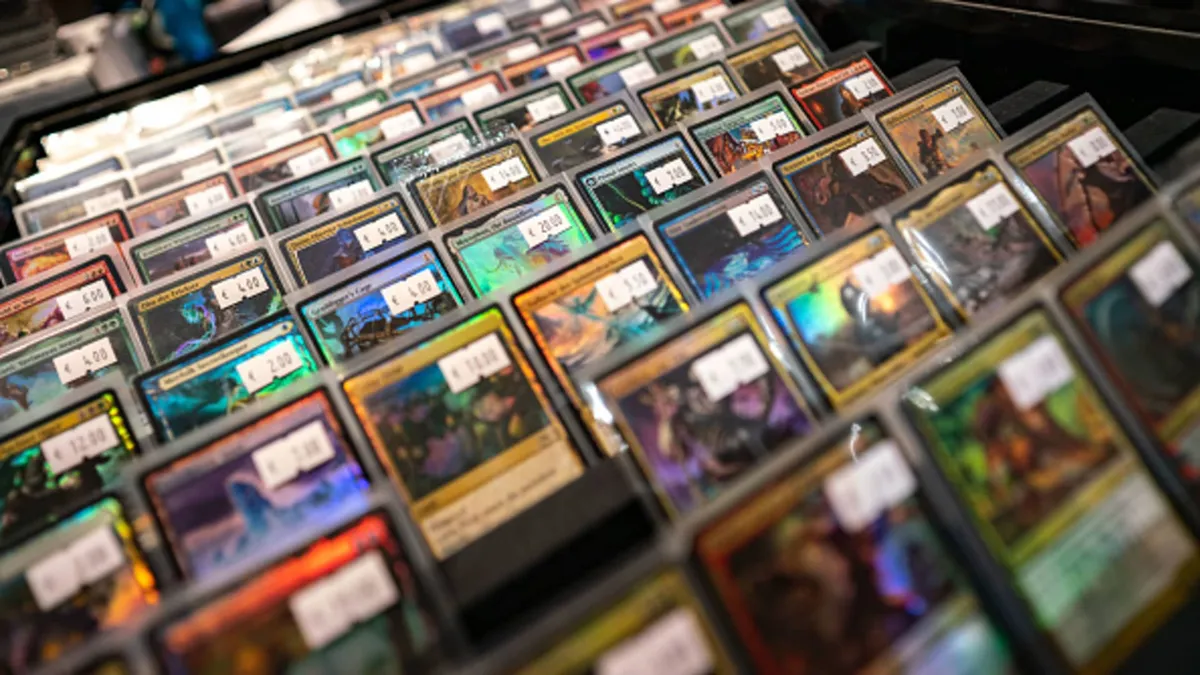
As screentime soars and technology advances at a rapid pace, a low-tech pastime is experiencing a remarkable revival: the collection of trading cards. This nostalgic hobby, featuring cardstock that showcases everything from NFL stars to Pokémon and even pop icons like Taylor Swift, has become one of the hottest toy categories in stores this year. Major retailers are ramping up their inventories ahead of the holiday season, anticipating that demand will extend beyond traditional toy buyers, including children and dedicated collectors.
"We see trading cards becoming a popular gifting category for all ages," remarked Rick Gomez, Target's executive vice president and chief commercial officer, in an interview with CNBC. He noted, "We will fuel this demand with new releases and exclusive drops." Target plans to introduce new trading card collections almost every week throughout the holiday season, positioning them as ideal gifts and stocking stuffers.
According to market research firm Circana, strategic trading card sales — excluding sports cards — have surged by 103% year-to-date through August, while non-strategic card sales, which include collectible pop culture and sports cards, have increased by 48%. Target has reported a staggering nearly 70% increase in trading card sales year-to-date, with annual revenue from this category expected to surpass $1 billion.
Online platforms are witnessing even more dramatic growth. Walmart Marketplace reported a remarkable 200% increase in trading card sales from February 2024 to June 2025, with Pokémon sales skyrocketing over tenfold year-over-year during the same timeframe. In a bid to capture the growing interest, Walmart has launched a new weekly influencer livestream series focused on sports collectibles.
Since 2021, the trading card market has expanded significantly, with strategic card sales increasing by $891 million (139%) to reach a total of $1.5 billion. Meanwhile, the sales of non-strategic cards and collectible stickers have climbed by $565 million (156%), totaling $925 million during the same period, according to Circana.
Millennials and Gen Z consumers have played a pivotal role in the trading card market's resurgence. Juli Lennett, vice president and industry advisor for Circana's U.S. toys practice, explained, "Adults are buying these cards as they evoke a sense of nostalgia from their carefree childhoods." She added, "In the current economic climate, trading cards offer an affordable luxury. Many people who couldn’t afford cards in their youth now have the financial freedom to indulge." Additionally, some buyers view trading cards as alternative investments, with Pokémon cards delivering a cumulative return of 3,821% since 2004, according to analytics firm Card Ladder.
To combat the rise of online resellers, many retailers have implemented purchase limits, allowing customers to buy only two packs per visit. Despite the growth in the trading card category, there are concerns about whether this momentum will continue into the peak holiday shopping season. Circana's data shows that 19% of adults have purchased Pokémon cards recently, indicating a trend of self-purchasing that could affect gifting during the holiday season. "While there’s been steady growth, many buyers are purchasing for themselves rather than as gifts," Lennett noted.
Despite the uncertainty surrounding holiday gifting, trading cards have proven to be a consistent market throughout the year. Unlike many toy categories that experience seasonal peaks, trading cards enjoy steady sales year-round. "Cards sell just as well in March or July as they do in December," Lennett explained, making them an attractive option for retailers looking to mitigate seasonal risks.
Target has capitalized on this year-round interest by expanding its trading card assortment, increasing the frequency of product drops, and enhancing in-store displays. Gomez commented, "We don’t see the business slowing, and we anticipate continued growth in popularity."
Pokémon remains the dominant force in the trading card category, with sales exceeding $1 billion last year, making it the first toy brand to reach this milestone in the U.S., according to Circana. Sports cards are also gaining traction, particularly among teenage boys, with NFL packs leading the way. "We see a diverse range of customers, from adult collectors to families with children requesting trading cards," Gomez stated.
While contemporary trading cards are gaining popularity among younger audiences aged 8 to 28, vintage cards — typically pre-1970s — have not resonated as strongly with Gen Z and Gen Alpha collectors. Matthew Winkelried, CEO of New York-based Bleecker Trading, shared, "Most of my customers aren't interested in vintage cards unless they’re looking for iconic names like Mickey Mantle or Hank Aaron." The scarcity and high prices of vintage cards also present a barrier to entry for younger collectors.
The trading card industry has rebounded impressively since nearly collapsing in the 1990s due to overproduction. The growth has been especially robust since the pandemic, driven by a combination of nostalgia, community engagement, and investment potential. "For many, trading cards provide a sense of belonging through activities like card exchanges or games such as Pokémon and Magic: The Gathering," remarked Jason Howarth, senior vice president of marketing and athlete relations at Panini America.
Looking to the future, major retailers are focused on nurturing the long-term growth of the trading card category. Target is investing in exclusive sets, limited specialty drops, and strategies to attract a more diverse consumer base. Gomez highlighted the initiative to engage different age groups and genders, noting, "The WNBA is one of the fastest-growing segments in sports cards, especially among young girls." With the 2026 FIFA World Cup set to span the U.S., Canada, and Mexico, soccer is also poised for significant growth.
As the trading card industry continues to evolve, it remains to be seen how retailers will adapt to changing consumer preferences and market dynamics. However, one thing is clear: trading cards are back, and their appeal shows no signs of waning.